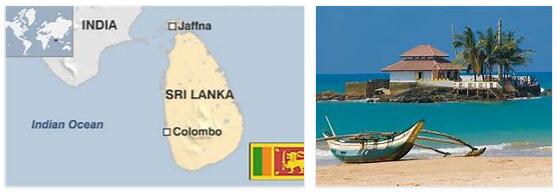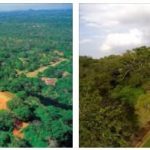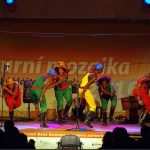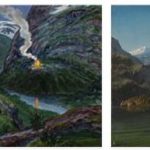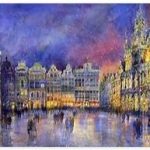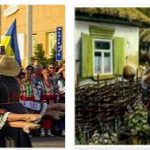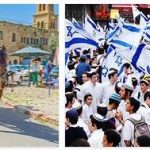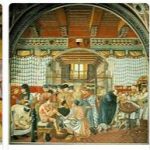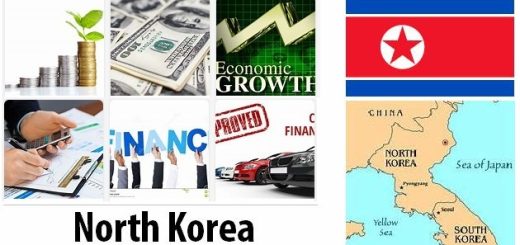Sri Lanka Arts and Culture
ARTS
Exposed to the immediate influences of art from India, that of Sri Lanka reflects its characters and different trends through the manifestations of Buddhism and Hinduism. The Buddhist architecture of the Anuradhapura period (3rd century BC-8th century AD), inspired by the Indian art of Sanci, Bharhut, Amaravati, Bodh-Gaya, affirms itself with a series of religious monuments (Thūpārāma, Ruwanweli, Mirisivati, Abhayagiri, Jetavana). While towards the century VIII Buddhist architecture reaches its own forms of expression after the influences of the Gupta and post-Gupta styles, the Hindu architecture of the Tamils remains linked to Dravidian art, repeating its forms and decorations. The stūpa (dagoba), an emblematic monument of Buddhism, during the period of Anuradhapura is the subject of some transformations dictated by devotional solicitations: the multiplication of the umbrellas (chattra) determines in the terminal part a conical-shaped structure with spiral molding. The same formal simplification was adopted for STUPA smaller (erected sanctuaries within circular with a domed roof called cetiyāgāra) in the order of the base terraces, so reduced in a series of overlapping moldings. Dating back to the introduction of Buddhism (3rd century BC) is the characteristic bodhigara shrine, dedicated to the bodhi tree (enlightenment of the Buddha), represented at Nillakgama and Anuradhapura. Next to these ancient monuments that had a wooden elevation, there is a type of building, built entirely of brick, called gedigē. A late example (12th century) is in the Lankātilaka of Polonnaruwa, the second capital of the island of Ceylon, where the last important period of Sinhalese art, influenced by that of Cola, is documented by temples and sculptures. During the century. XII are the sanctuaries Lankātilaka, Tivankapatimāgara, Thūpārāma, Vātadāgē and the rock complex of the Vihāra Gal sculptures, depicting Ananda in mourning at the Parinirvana of the Buddha. Even the sculpture, initially influenced by that of Amaravati, developed from the century. V with its own characters, however revealing over the centuries stylistic affinities with gupta art (heads of Buddha and Bodhisattva in the museums of Colombo and Anuradhapura), pāllava (sculptures in Isurumuni and from Situlpavu to Kuruk-kalmadam), pāla (” moon stones ”at the entrance to the Ratnaprāsāda in Anuradhapura). The most important document of painting on the island of Ceylon is the famous fresco (5th century) from Sigirya, depicting a procession of apsaras (celestial nymphs). Other remains of painting date back to the century. VIII-XIII, the period in which it decays. The school that flourished later in Kandy (18th century) will have new characteristics compared to the past, but the impulses of the Buddhist rebirth will be replaced by Western influences (19th century). The Sinhalese artistic tradition has recently experienced a significant revival, both by reconnecting to the ancient Buddhist spirituality with LTP Manjusri, and by recovering the cultural values of the country through the forms of expression and techniques linked to the West with the works of the artists of the “Group ’43” as, G. Beling (1907-1992), Harry Pieris (1904-1988), J. Deraniyagala and G. Keyt, considered the most important exponent of Sinhalese modern art, as well as a valid poet. The current trends, albeit linked to an evolution of the indications of the “Group ’43”, are to be considered the real beginning of an original research, a sort of “post-traditional” art, of which many have promoted of the emerging personalities of Sri Lankan art (S. Senayake, R. Deraniyagala, T. Samarawickrema, G. Bawa).
CULTURE
The Indian component was certainly a determining factor in the structuring and evolution of Sinhalese folklore, starting with the traditions of the Vedda customs, the aborigines who live in the Sinhalese jungles. Contributions then came from the Tamils, also deriving from India and colonial experiences: Portuguese, Dutch, Europeans in general. The picture was then further enriched with Malaysian and Arab infiltrations and with the formation of groups of Eurasians (the presence of these communities is one of the most unique characteristics of Sri Lanka). If, from an architectural point of view, the country hosts temples, mosques and churches, the artistic world has received this constellation of suggestions in different times and ways. Although the arts, traditional music and dances are still an integral part of school curricula, the theater now hosts many Western texts and performances, as well as traditional music has been joined by imported artists and genres, from pop to. Modern literature has had its own reference figure in Martin Wickramasinghe (1890-1976), author of historical, philosophical and scientific essays, short stories, plays, novels, including (1948;) and the novel (1956;). A popular culture museum is also dedicated to him. The last years of the twentieth century. they have seen other personalities emerge internationally. Philip Michael Ondaatje (b. 1943), novelist and poet living in Canada, is the author of (1992), from which an acclaimed film was made, (1987) and (2007); (b.1958), born in Colombo, studied in Australia and France, published in English; Rajiva Wijesinha (b. 1954), historian and novelist, trained in Oxford, is the author of, a novel that illustrates the transformations taking place in Sri Lanka from the 1960s to today. Also worth mentioning is Romesh Gunesekera (b. 1954), author of, awarded with the in 1994. The history and art of Sri Lanka find in Colombo and Anuradhapura, the first capital of Sri Lanka and the largest among the ancient cities of the island, the two most important centers. Colombo is home to the National Museum, built in 1877, and rich in objects, documents and artifacts relating to all phases of national history. Among the UNESCO World Heritage Sites there are six sites in Sri Lanka: the historic city of Polonnaruwa (1982), the old city of Sigiriya (1982), the sacred city of Anuradhapura (1982), the old city of Galle and its fortifications (1988), the sacred city of Kandy (1988) and the Golden Temple of Dambulla (1991). Visit justinshoes.net for Sri Lanka tea nature and culture. A particular “Western influence” is that in sport: the Sinhalese national team certainly deserves a mention cricket, the discipline in which she won the world championships in 1996.
